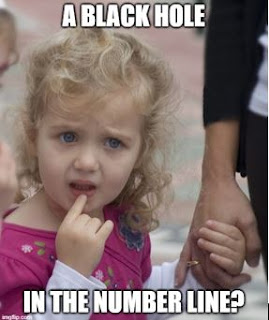As an example, take the word mathematical.
Mathematical has twelve letters.
Twelve has six letters.
Six has three letters.
Three has five letters.
Five has four letters.
Four has four letters.
Four has four letters, and now we entered this black hole at 4, and we can't get out of it!
Try a few more words. Try words as long as you like. Try morphophonemically, which has 18 letters. I have done exhaustive research on this with R, and you will find every English word eventually falls into the black hole at 4 and can't get out. At this rate, there will be no words left!
Of course, this is an April Fool's Day prank.
Did you figure it out?
Here is some R code to test the word mathematical.
# Try word mathematical
library(broman)
x <- "mathematical"
y <- -99 # Initialize y
while(y != "four"){
y <- nchar(x)
y <- broman::spell_out(y, max_value = 20) # Spell out an integer as a word
print(c(x,y))
x <- y
}
Here is some R code to test ten random words.
# Try ten random words
set.seed(123)
words <- read.table("https://raw.githubusercontent.com/dwyl/english-words/master/words_alpha.txt")
original <- sample(words$V1, 10, replace = FALSE)
x <- original
rm(words) # free up memory
for (i in 1:10){
y <- vector()
y[1] <- "dummy"
for (j in 1:100){
c <- nchar(x[i])
y[j] <- spell_out(c, max_value = 20)
x[i] <- y[j]
if (y[j] == "four") {
break
}
}
cat(c(original[i], "\t", y), "\n")
}
Here is the code for the number line:
library(ggplot2)
df <- data.frame(x = c(1,2,3,4,5,6,7,8,9,10),
y = rep(0,10),
group = c("A","A","A","B","A","A","A","A","A","A"))
ggplot(df, aes(x = x, y = y)) +
geom_point(aes(color = group, size = ifelse(x == 4, 15, 15))) +
geom_hline(yintercept = 0, linetype = 1, color = "lightblue", size = 1) +
scale_x_continuous(limits = c(0, 11), expand = c(0, 0),
breaks = NULL, minor_breaks = NULL) +
scale_y_continuous(limits = c(-0.2, 0.2), expand = c(0, 0),
breaks = NULL, minor_breaks = NULL) +
scale_color_manual(values = c("red", "black")) +
ggtitle("THE BLACK HOLE AT NUMBER 4") +
theme_void() +
theme(legend.position = "none",
axis.line = element_blank(),
axis.text = element_blank(),
plot.title = element_text(color="black", size=14, face="bold")) +
geom_text(aes(x = x, y = -0.1, label = x), size = 5)




No comments:
Post a Comment